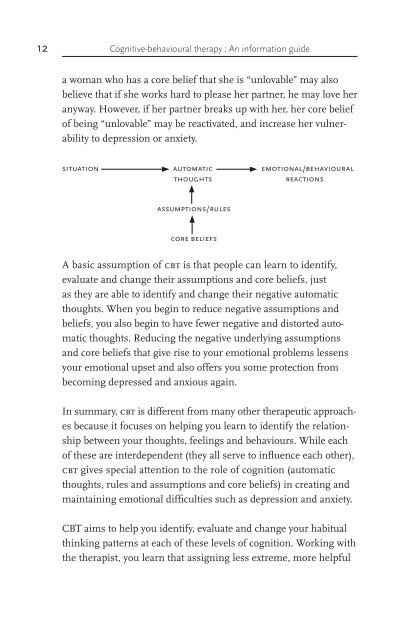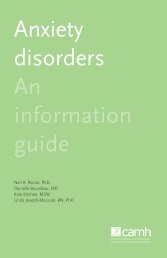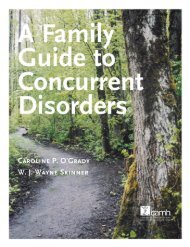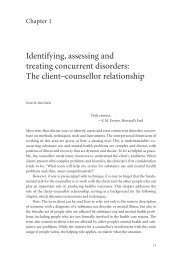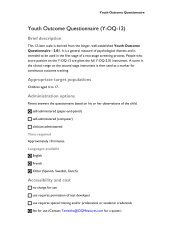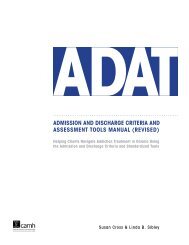Cognitive-behavioural therapy: An information guide - CAMH ...
Cognitive-behavioural therapy: An information guide - CAMH ...
Cognitive-behavioural therapy: An information guide - CAMH ...
Create successful ePaper yourself
Turn your PDF publications into a flip-book with our unique Google optimized e-Paper software.
12 <strong>Cognitive</strong>-<strong>behavioural</strong> <strong>therapy</strong> : <strong>An</strong> <strong>information</strong> <strong>guide</strong><br />
a woman who has a core belief that she is “unlovable” may also<br />
believe that if she works hard to please her partner, he may love her<br />
anyway. However, if her partner breaks up with her, her core belief<br />
of being “unlovable” may be reactivated, and increase her vulnerability<br />
to depression or anxiety.<br />
situation automatic emotional/<strong>behavioural</strong><br />
thoughts<br />
reactions<br />
assumptions/rules<br />
core beliefs<br />
A basic assumption of cbt is that people can learn to identify,<br />
evaluate and change their assumptions and core beliefs, just<br />
as they are able to identify and change their negative automatic<br />
thoughts. When you begin to reduce negative assumptions and<br />
beliefs, you also begin to have fewer negative and distorted automatic<br />
thoughts. Reducing the negative underlying assumptions<br />
and core beliefs that give rise to your emotional problems lessens<br />
your emotional upset and also offers you some protection from<br />
becoming depressed and anxious again.<br />
In summary, cbt is different from many other therapeutic approaches<br />
because it focuses on helping you learn to identify the relationship<br />
between your thoughts, feelings and behaviours. While each<br />
of these are interdependent (they all serve to influence each other),<br />
cbt gives special attention to the role of cognition (automatic<br />
thoughts, rules and assumptions and core beliefs) in creating and<br />
maintaining emotional difficulties such as depression and anxiety.<br />
CBT aims to help you identify, evaluate and change your habitual<br />
thinking patterns at each of these levels of cognition. Working with<br />
the therapist, you learn that assigning less extreme, more helpful


